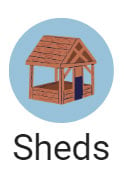This article is about how to install polystyrene sheets insulation, as to reduce the energy bill and to increase your comfort. In this project, we will show you how to prepare adhesive for installing polystyrene sheets on concrete wall, how to cut polystyrene and how to fix it properly. Generally speaking, there are many materials used to insulate your house, but the polystyrene sheets have several advantages. Contrary to popular beliefs, polystyrene is a highly efficient insulator and it is gaining market as we speak, due to its unique features: it is resistant to fire (the fire-resistant versions), it reduces the exterior noise and the cost of maintenance.
The thermal resistance of polystyrene boards is very high (R-value – 5), which means that you will save a great amount of money by investing into a professional insulation. During cold winter nights, you will save up to 50% energy, while inside your home, you will benefit from a cozy and warm climate. In addition, by increasing the thickness of the polystyrene boards it also improves the thermal resistance; you can choose from a large variety of sheet thicknesses 2-3-4”/5-8-10 cm, as to satisfy your needs.
The polystyrene insulation can be finished with many different textures, therefore you can choose the best model to fit your needs and tastes. In order to do that, all you have to do is to apply two layers of putty over the polystyrene insulation, and then to use decorative paint.
Investing in a polystyrene insulation is a smart decision, as while energy cost increase steadily, your house value will appreciate due to higher demand for energy efficient homes. Moreover, you can insulate your home by doing a diy project.
Made from this plan
In order to install polystyrene boards insulation, you need the following:
Materials
- Polystyrene sheets
- Adhesive for polystyrene
- Dowels for polystyrene
Tools
- Safety gloves, safety glasses
- Hammer, rubber hammer, utility knife
- Drill machinery, drill bits, mixer
- Measuring tape, framing square, pencil
- Ladder, handsaw, bucket
Time
- Clean the wall surface before installing the polystyrene insulation
- Install polystyrene sheets in running bond pattern
Preparing adhesive for polystyrene
Use a bucket to prepare adhesive for the polystyrene boards. The mortar we have to prepare is specially made for installing polystyrene to outside concrete walls. In order to prepare the adhesive, just fill 1/3 of the bucket with water, and then add the premixed material.
Smart tip: Leave the bucket with the adhesive for several minutes, before mixing it. In this way, you will get a better adhesive much quicker. The water will activate the molecules.
Next, we have to mix the compounds thoroughly, as to be able to fix the polystyrene boards on the concrete wall. There are two methods that we can use for mixing the mortar: on one hand manually, by using a trowel or mechanically, by using a drill mixer.
Smart tip: Use a drill mixer to ease the process: it will prepare the adhesive better and quicker.
Next, use a trowel to apply mortar alongside the edges of the boards, as shown in the image. The thickness of the adhesive shouldn’t be grater than 1”/2.5 cm, as otherwise you won’t be able to fix them properly on the concrete wall. An even layer of adhesive will also help to create a uniform layer on the wall.
Smart tip: If the surface on which you will install the polystyrene sheets is perfectly level, you could apply the mortar over the whole board and spread it with a comb trowel.
If the wall surface has numerous irregularities, it is better to apply the mortar over the polystyrene boards, as shown in the image. Basically, all you have to do is to apply six mounds of adhesive on the polystyrene sheet.
Smart tip: Make sure the mounds are placed symmetrically and have the same volume.
Installing polystyrene sheets
After we have applied the adhesive on the polystyrene sheets, we have to install them horizontally on the concrete wall. Consequently, you should start installing the boards from the bottom corner of the wall, using a full sheet.
Make sure the sheet are aligned perfectly. Next, them press gently, as to lock them to the wall. Afterwards, you have to use a level to check if the wall is perfectly plumb, as after the mortar dries out, it will be impossible to repair the mistake.
Continue installing the polystyrene sheets until you reach the end of the row. Make sure the edges of the boards are aligned each other, as to make a professional job.
If you find difficult installing the insulation, it would be better to leave the job to qualified professionals. Nevertheless, if you want to do it yourself, it would be easier to ask a friend to give you a hand. It is almost impossible to prepare the adhesive and to install the boards in the same time. In addition, it would take forever to complete the project, especially if we a speak of a large surface.
Smart tip: The next row should be installed vertically, as to give better strength to the insulation. Work carefully, as to make sure the boards are level and aligned properly. If you need a smaller piece than a full board, you have to use a hand saw to make the cut. Don’t leave gaps between the polystyrene sheets.
Continue preparing adhesive and installing polystyrene sheets, in the same manner, until you cover the whole surface of the wall. Use the pattern described beforehand, as to give strength to the insulation layer (on one row install the sheets horizontally, as on the next one lay them vertically).
Use a folding ladder, if you have to install polystyrene sheets at an inaccessible height. Just make sure the base surface is plane and supports firmly the ladder. If you do not feel comfortable about working at height, you should hire a contractor to do the job for you, even thought it will increase the total costs.
Smart tip: After you have installed the polystyrene insulation over the whole surface of your house/walls you should leave it that way a couple of days, to let the adhesive dry out. Otherwise, you will damage the boards and they won’t be aligned anymore.
Securing polystyrene insulation with dowels
After you made sure the polystyrene mortar has dried out, you can begin drilling holes through the insulation layer in the concrete wall, as to install the special dowels. Consequently, you should use a good drilling machine with hammering function and a drill bit (usually #10) in order to make holes in the concrete wall.
The drilled hole must be 2-3”/5-7 cm longer than the thickness of the polystyrene, otherwise you won’t be able to install dowels properly. Drive the drill machine, several times, backward and forward, to clean the hole from residues.
Remember that we have to install dowels at the intersection of the boards corners, and one in the center of each sheet of polystyrene. Nevertheless, read carefully the instructions of the manufacturer, as the requirements may vary.
Usually you should be able to insert the dowel with your bare hands, but if you face any problems, you could use a hammer to do the job. Just make sure you do not apply to much force, as you risk damaging the plastic head of the dowel.
Next, after we have installed the plastic dowel in the drilled hole, we have to insert the plastic screw. This time, we also need a mallet (rubber hammer) in order to insert the plastic pin properly. First position the screw in the dowel by hand, and then lock it into position with a mallet.
Smart tip: Make sure the head of the dowel and the plastic pin are aligned with the surface of the polystyrene boards, otherwise it would be impossible to get a nice looking finish for your exterior walls.
Continue fixing the polystyrene insulation layer, using dowels (6-8 dowels per 10 ft2/1 m2) and plastic pins. Work patiently and pay attention to details, as to do a good job.
Check attentively if the plastic dowels are secured properly, otherwise your insulation layer won’t last more than one wintertime. In addition, there shouldn’t be any gaps between the polystyrene boards, otherwise the thermal resistance of the insulation layer will decrease significantly. Nevertheless, if there are gaps between the polystyrene sheets, you can solve the problem by spraying polyurethane foam. Use a cutter to cut the foam and make the surface even.
Smart tip: The last operation before finishing the polystyrene insulation layer is to clean the adhesive residues. Make sure the surface is plane, level and doesn’t have any irregularities or residues on it. Don’t forget to clean the tools thoroughly.
My best tips on installing polystyrene sheet insulation:
Polystyrene sheet insulation is a great choice for improving the thermal efficiency of your home or workspace. It’s lightweight, moisture-resistant, and easy to work with. If you’re planning to install polystyrene sheet insulation, follow these tips to ensure you get the best results:
1. Choose the Right Polystyrene Type
There are two main types of polystyrene insulation: expanded polystyrene (EPS) and extruded polystyrene (XPS). EPS is cheaper and commonly used for walls and roofs, while XPS is denser and more suitable for floors and basements. Determine which suits your needs based on the location and insulation requirements.
2. Measure Twice, Cut Once
Ensure you have accurate measurements of the area you’re insulating before cutting the polystyrene sheets. Mark the dimensions on the sheet and use a sharp utility knife or insulation saw to make clean cuts. A straight edge can help keep your cuts precise and minimize gaps during installation.
3. Seal the Gaps
Gaps between insulation sheets can reduce the effectiveness of your work. After installing the polystyrene sheets, use spray foam insulation or specialized polystyrene-compatible sealant to fill any small gaps. This step prevents air leakage and ensures optimal thermal performance.
4. Use Adhesives Carefully
When adhering the sheets to surfaces, opt for polystyrene-safe adhesives. Solvent-based adhesives can dissolve polystyrene, damaging the insulation. Instead, use a water-based or acrylic-based adhesive, and apply it evenly in a zigzag pattern for a firm hold.
5. Anchor Properly in Place
For installations where mechanical fasteners are required (e.g., exterior walls or ceilings), use plastic insulation anchors designed to hold polystyrene securely. They prevent the sheets from sagging and ensure long-term durability.
6. Install a Vapor Barrier (if needed)
In certain applications like basements or exterior walls, installing a vapor barrier can help control moisture. Place the vapor barrier between the polystyrene and the interior wall surface to prevent condensation buildup, which can damage your insulation over time.
7. Protect the Insulation
Polystyrene insulation is susceptible to UV light and physical damage, so it’s important to protect it. If you’re installing it outdoors or in areas prone to wear, consider covering it with a durable material like drywall, plywood, or siding.
8. Stay Safe
When working with polystyrene insulation, always wear protective gear, including a dust mask, safety goggles, and gloves. The material can create fine particles that may irritate your eyes and lungs, especially when cutting.
By following these best practices, you’ll make sure your polystyrene sheet insulation performs efficiently and lasts for years. Whether you’re insulating walls, floors, or ceilings, a well-executed installation can significantly improve energy efficiency.
Thank you for reading our article on how to install polystyrene sheet insulation and we recommend you to check out the rest of our insulation projects. Please share our projects with your friends, by using the social media widgets.
Related projects:
How to finish polystyrene insulation

















